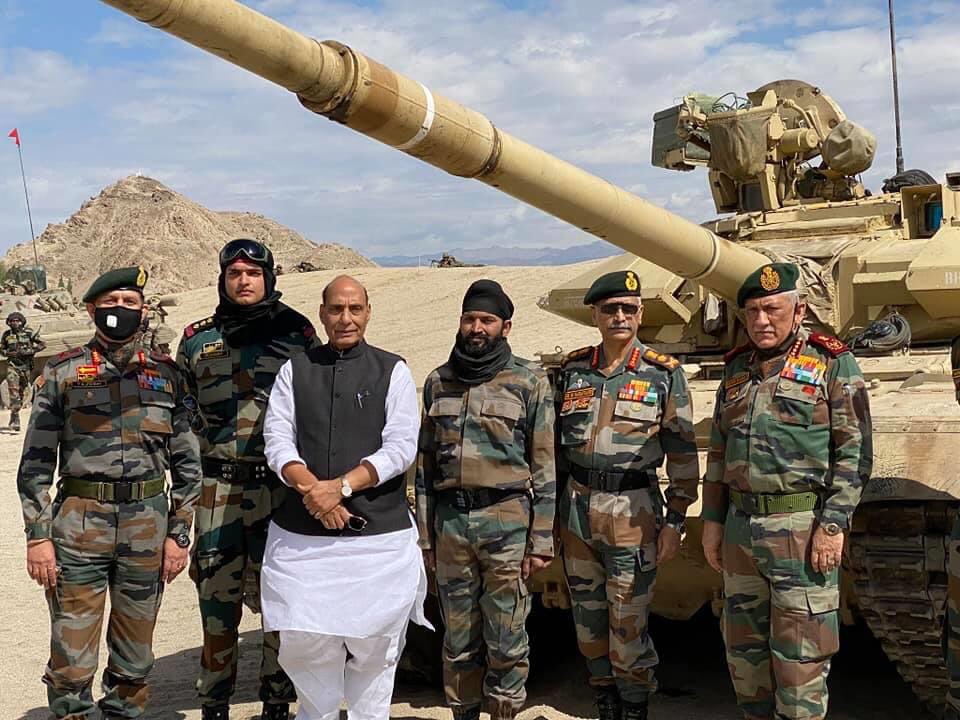India – Vietnam Military Alliance, To Neutralize China-Pakistan Nexus
 India and Vietnam relations are centuries old. During recent times the friendship has moved from trade and Cultural relations to strategic partnership. Beijing’s behaviour in Natuna Sea area ( So calked South China Sea ) and its nexus with the terrorist epicenter Pakistan has encouraged the developing of military partnership between Vietnam and India – a partnership many experts see as being aimed at countering China in much the same way as the China-Pakistan alliance is seen as countering India.
India and Vietnam relations are centuries old. During recent times the friendship has moved from trade and Cultural relations to strategic partnership. Beijing’s behaviour in Natuna Sea area ( So calked South China Sea ) and its nexus with the terrorist epicenter Pakistan has encouraged the developing of military partnership between Vietnam and India – a partnership many experts see as being aimed at countering China in much the same way as the China-Pakistan alliance is seen as countering India.
Vietnam has been angered by satellite images showing China recently deployed at least one H-6J missile-carrying bomber to Woody Island, one of the disputed Paracel Islands in the Natuna Sea( South China Sea). Vietnam’s foreign ministry last week warned that the bombers’ presence on the island – known as Phu Lam in Vietnam – not only violated Vietnamese sovereignty but jeopardised peace in the region.
The images are thought to have been high on the agenda when Vietnamese ambassador Pham Sanh Chau met Indian Foreign Secretary Harsh Vardhan Shringla last Friday to brief him on escalating tensions in the Natuna Sea. They are also thought to have featured in discussions during a virtual meeting between Indian external affairs minister S. Jaishankar and his Vietnamese counterpart Pham Binh Minh on Tuesday.
Carlyle Thayer, emeritus professor of the University of New South Wales at the Australian Defence Force Academy, said this was not the first time China had deployed bombers to the Paracels – it dispatched several H-6K long-range bombers there in 2018. However, Vietnam’s openness about the ambassador’s meeting was significant.
Given that [this time] Vietnam made its brief to India public, it is likely that Vietnam is engaging in a diplomatic exercise to call out China’s actions with the objective of eliciting full support from India and even others.
In reaching out to India, Vietnam had showcased not only a comprehensive strategic partnership between the two countries but also showed its continued support of India’s freedom of navigation and overflight in the South China Sea, said international relations lecturer Huynh Tam Sang from the University of Social Sciences and Humanities, Vietnam National University-Ho Chi Minh City.
“India and Vietnam now find themselves at a geostrategic convergence. Both sides oppose China treating the Natuna Sea as its backyard and have interests in preserving peace and stability in the contested waters,” Huynh said.
Vietnam’s diplomatic moves would encourage India’s engagement in the Natuna Sea, Huynh said, adding that boosting defence cooperation would send “a timely message” to Beijing.
Mohan Malik, a visiting fellow of the NESA Centre for Strategic Studies (a regional centre of the US Department of Defence), likened the India-Vietnam partnership to China’s relationship with Pakistan.
“Just as Islamabad and Beijing closely coordinate and support their military moves against India, New Delhi and Hanoi have now begun briefing and supporting each other vis-à-vis Beijing. And just as Pakistan favours a strong Chinese naval presence in the Indian Ocean, Vietnam favours an Indian naval presence in the Natuna Sea (South China Sea),” Malik said.
“Both India and Vietnam perceive China as an irredentist and expansionist power that can never be territorially satiated and therefore presents a clear and present danger. India seeks to do to China what China has done to India, that is, containment and encirclement,” Malik added.
Vietnam would continue strengthening ties with India to address shared concerns about China’s growing assertiveness throughout the Indo-Pacific, said Derek Grossman, senior defence analyst at the Rand Corporation, a Washington think tank.
“This is likely to involve information sharing, military training and perhaps weapons procurement,” Grossman said, adding that the two countries’ militaries were highly complementary.
The Indian military is currently on a war-footing for a possible two-front conflict with China and Pakistan. However in case of war, the Chinese jugular vein passing through the Indian Ocean Region in the form of Shipping trade lanes can be cut off. This ability to cut off the Chinese life line is the real strength of India. Indian Navy will be in a position to provide real-time military help to Vietnam though presently in a limited manner only. Though once A& N Command comes up to full strength then it will be much more. “However, their intelligence sharing pact would come in handy for monitoring the movement of the Chinese navy’s surface and subsurface vessels,” Malik added.
Thayer pointed out that while India-Vietnam defence ties went back 13 years, there was only one Indian sale to Vietnam during that time recorded on the arms transfer database from the Stockholm International Peace Research Institute: four 35 metre ocean patrol vessels, valued at US$100 million, that were sold to Vietnam’s coastguard.
In 2014 and 2016, Vietnam began discussions with India to buy the Brahmos and Akash missiles, but since the Brahmos missile was jointly produced by India and Russia, it was not sold to Vietnam for fear of angering China, Thayer said.
“Any strengthening of India-Vietnam defence ties would be driven by controlled Chinese belligerence towards both India and Vietnam, and would most likely be incremental. Neither India nor Vietnam want to aggravate their relations with China,” Thayer said.
“In sum, China’s deployment of a single H-6J bomber [to Woody Island] should not be viewed as a game changer in strategic terms necessitating a sudden acceleration of India-Vietnam defence ties,” Thayer said.
Another aspect of the India-Vietnam relationship discussed by Pham and Shringla was whether India could take a greater role in exploring for oil and gas off the Vietnamese coast in the Natuna Sea.
India’s Oil and Natural Gas Corporation’s international arm ONGC Videsh has for several years operated in waters claimed by both Vietnam and China, with Hanoi’s blessing but opposition from Beijing.
Malik said greater India-Vietnam cooperation in such explorations could be expected given China’s massive infrastructure development and dam construction in the illegally occupied Northern areas of Pakistani Occupied Kashmir.
Grossman said greater collaboration was a win for both nations; India diversified energy resources while Vietnam got to treat “its exclusive economic zone as such and not as an overlapping sovereignty dispute with China that forces it to ask permission from Beijing before proceeding”.
Mahoney said Vietnam needed help in oil and gas exploration and its choices were either India or China.
“The only way forward is either to resolve the conflict with China and then move forward with Beijing, or do so more securely with India,” Mahoney added.
Thayer said any future India-Vietnam cooperation would be complicated by commercial considerations such as financial viability and the risk of Chinese harassment of any oil operations in disputed waters.
Huynh said a breakthrough in cooperation over exploration between India and Vietnam was unlikely ahead of the 13th Vietnam Communist Party Congress expected to begin in the first quarter of 2021.
While freedom of navigation in the Natuna Sea was central to India’s vision of a free and open Indo-Pacific, Malik said even more important to New Delhi was to counter Beijing’s claims of sovereignty over the vast majority of the disputed waterway.
Malik said India could not afford to be a bystander to the dispute as over US$200 billion worth of Indian trade passed through the Natuna Sea.
Thayer said that under Prime Minister Narendra Modi, the slogan of his predecessor “Look East” had become “Act East” as New Delhi sought economic and technological links with Southeast Asian
countries. Vietnam was key to this strategy due to its anti-colonial ties dating back to the 1940s, Thayer said.
Grossman said India was also “probably interested in keeping China distracted in the Natuna Sea (South China Sea) to constrain Beijing’s future activities and designs in the Indian Ocean region”.
India has developed the Andaman and Nicobar Islands in part to dominate the entire Indian Ocean Region East of Sri Lanka. Chinese development of Thailand’s Kra Canal, can in no way affect the dominance of India in the region. In case of any hostilities, the Kra Canal will get blocked completely with few direct hits if required. Any help given to PLAN will not be tolerated by India.
“INS ANDAMAN” and INS NICOBAR “ are going to become two unsinkable aircraft carriers that will totally dominate not only the Mallacas but also help the IAF to make forays into Natuna Sea when the time comes. So Indians are not at all worried about the Kra Canal or the Coco Island listening posts. It will be wiser for both Thailand and Myanmar to ensure that there are no activities in these places which affect India’s National Interest in any way.
Vietnam should try its best to avoid expanding conflict with China but it has nothing to be afraid of. India is there to ensure that total peace prevails in the region and no bully is allowed to take over.




